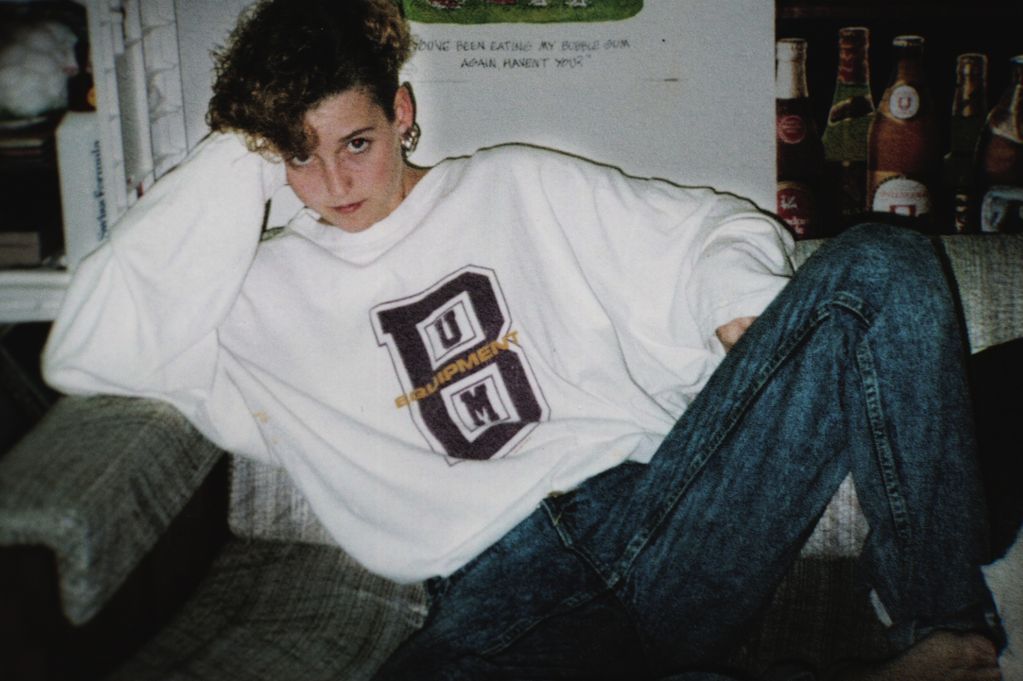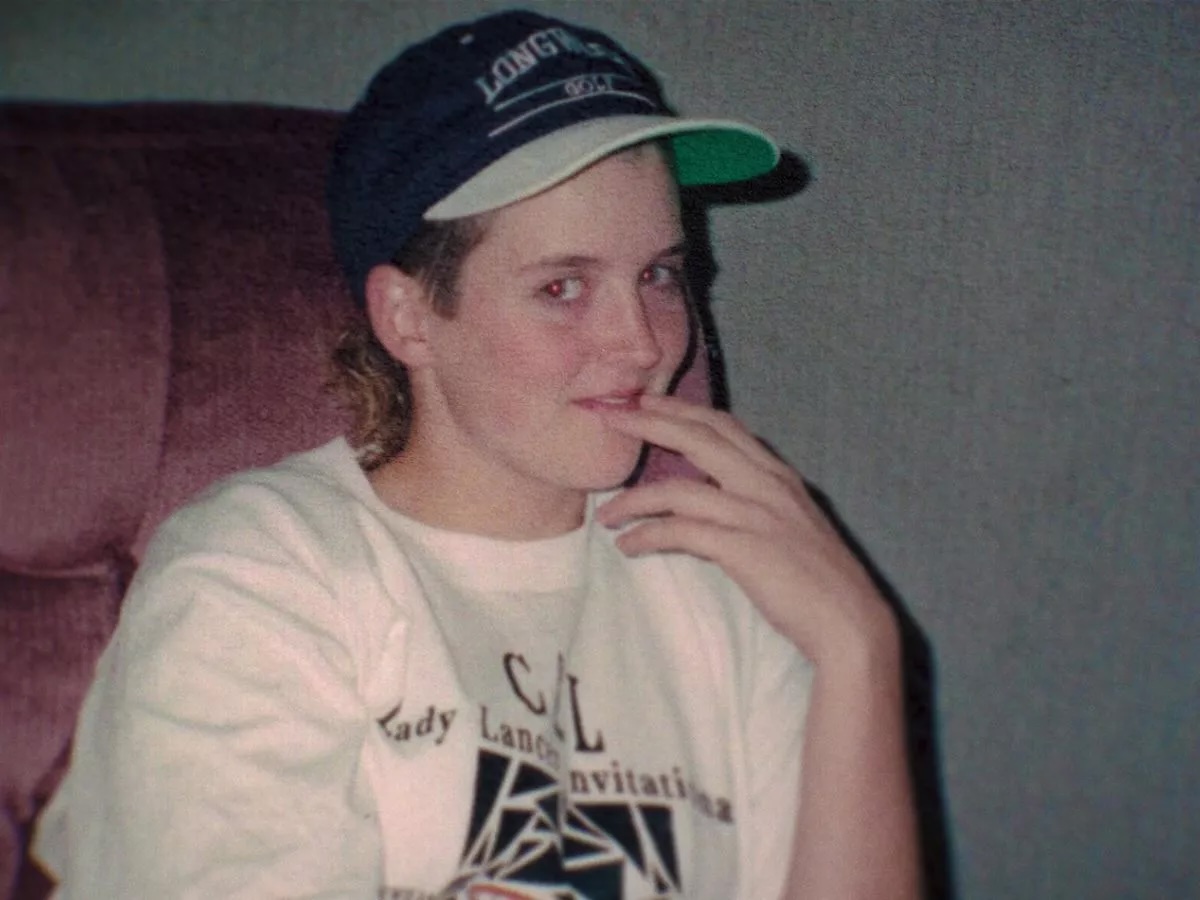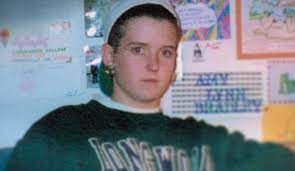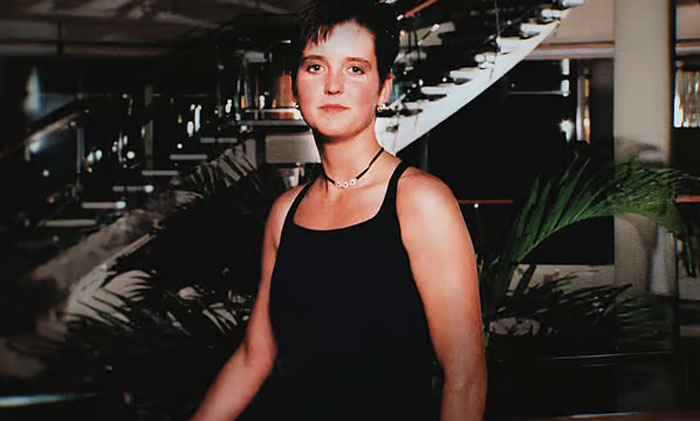

“I think we stayed in that car for like, an hour, kissing. It felt like, finally. It was magical.” These are the words of Mollie McClure, a deeply important unheard voice of a ubiquitous true crime mystery that’s plagued the genre for nearly 30 years.
On March 24, 1998, Amy Bradley disappeared on a Royal Caribbean cruise she was taking with her brother Brad and their parents Ron and Iva. After a night of drinking and dancing, she and her brother returned to the room the family was sharing and sat on the balcony enjoying the sea air. Brad eventually went to sleep. By 6 a.m., Amy had disappeared. To this day, neither her clothes nor her body have ever been recovered.
Because I’ve dabbled in writing crime fiction, I’ve done my share of true crime deep dives, particularly into the stories of Jane and John Does and missing marginalized persons. Even before the most recent documentary about her case, Amy Bradley Is Missing, premiered on Netflix last month, I knew the basics behind Amy’s story. Or so I thought.
Amy Bradley Is Missing, directed by the duo behind the exploitative The Price of Glee, circles three categories fans of the genre can’t resist. The first is missing white woman syndrome. The second is the thrill of a “locked door” mystery. The third is xenophobic panic about the human trafficking of nice girls from the suburbs.
The most prominent photo of Amy distributed to the public is understandably from the night she went missing, though it isn’t what she went missing in. It shows her dressed up for a formal dinner, wearing a black and jeweled necklace, shiny earrings, and a black dress. It wasn’t until this new documentary that I — and even Internet experts on this case — saw more casual pictures and videos of her.


I’m not sure how to explain the ‘90s lesbian je ne sais quoi but whatever it is, Amy has it. In these new photos, Amy is all baseball caps and shorn hair. She has a tattoo on her back of Taz from the Looney Tunes spinning a basketball. In videos of her doing the “trick shots” her friends say she was known for, she has undeniable swag. It turns out that in her everyday life, Amy Bradley was pretty butch.
Yet Amy’s sexuality was kept hush-hush for nearly three decades. (Even the subreddit dedicated to her case was rocked by the information.) Apparently, Amy had come out as a lesbian a few years before the cruise, and her Virginian family had not been thrilled about it.
Her mother explains in the documentary, “As her parents, we were concerned that in 1995, those feelings would not be welcomed by the general population.”
Iva isn’t wrong. Butch lesbians in the early 1990s are like gods to me. What must it have felt like to hear even the most liberal politicians slam gay marriage and vote for Don’t Ask, Don’t Tell? Every single butch who was out in the 90s should be given the Purple Heart for their service.
Amy being a lesbian and the erasure of her sexuality matter to the case. No doubt there are people who know far more about Amy’s story than I ever will, but I want to speak to the queer reveal and why it wasn’t disclosed until 2025.
The film starts with Amy’s mother sobbing. She and Amy’s father have not moved on at all. They think about her 24/7. They’ve kept her car in the garage untouched, waiting for her return. They obviously loved their daughter. In an interview with one of Amy’s best friends Sarah Luck, she claims that Amy’s parents’ disapproval of her sexuality definitely bothered her. Their whole college social circle drank a lot, but it seemed to Sarah like Amy was trying to numb the pain of her parents’ rejection.
Kat Lovelace, the first of Amy’s ex-girlfriends interviewed, says their relationship is why each of them came out to their families. Afterwards, Amy’s father wrote Kat a three-page letter blaming her for making his daughter gay.
In the doc, Ron refutes this. “It’s Amy’s life. It wasn’t what we would choose for her but it’s her life,” he says, “and we loved her unconditionally, and I remember putting that in the letter.”
Amy’s brother Brad, in follow-up interviews after the documentary’s premiere, clarified that their close knit family was actually fine with Amy’s sexuality. But, he says, Amy was never a lesbian. Sure, she’d come out to them as bisexual, but at the time of her disappearance, Brad claims Amy had a boyfriend. (Her friend Sarah says that Amy self-identified as “gay.”)
This all would have been useful to determine Amy’s state of mind. She had allegedly had seven light beers and was feeling unwell when her brother left her on the balcony at around 3:30 a.m. Some theorize that she was drinking so much because it was stressful to be trapped at sea with her parents or that she was sad about her recent breakup with the aforementioned Mollie.
Her parents deny that Amy’s disappearance was an accident brought on by drinking away her pain. They also insist she did not die by suicide. To them, Amy did not go overboard at all. As the years crept on, why would her family want to think their harsh response to her coming out may have contributed to her disappearance? The guilt would eat me alive.
They say Amy must have been kidnapped. Amy must have been trafficked. Her family paints a picture of a woman that men flocked to. She was magnetic, they say. So much so that the femme photos she’d taken before dinner were stolen by an admirer and had to be reprinted. The waitstaff were at her beck and call. Every guy on that boat was flirting with her. Investigators wondered if she could have been lured by one who “sweet-talked” her into following him to a rough area of Curacao.
I also don’t think Amy died by suicide. I don’t believe her intoxication was connected to her family’s rejection, and I don’t think she was smuggled off the ship and forced into prostitution. I think she fell off the railing while trying to puke.
Still, we can’t ignore the world Amy was living in. Matthew Shepard was killed that year. Ellen DeGeneres coming out in 1997 had ruined her career. Conversion therapy was in full swing, enough for the 1999 LGBTQ movie But I’m A Cheerleader to resonate with the community. It would be understandable if her family felt saying Amy was gay would endanger her with her kidnappers, or make the general public uninterested in her case.
It would have cleared up one demerit against the case’s prime suspect: Alistar Douglas, the bass player from the ship’s band. People speculated that maybe she left to hook up with him because she was seen dancing with Alistar right before she went missing. He could have killed her afterwards. (A couple of teens claim they saw her on the upper deck with him.) Now that seems unlikely.
Her being a lesbian also sheds some light on the racist and sexist fetishization that has come out of Amy’s story. “Amy Bradley Is Missing” spends a lot of time dissecting a set of prurient photos of a sex worker advertisement that the family was emailed anonymously in 2005. The woman does resemble Amy even though she’s done up in teased hair and pink eyeshadow, but she doesn’t have Amy’s tattoos. Maybe they’re covered. It’s 50/50 on whether she’s Amy, but I lean toward no.
It’s interesting to note that being public about Amy being taken as a sex slave (on shows like Dr. Phil) was less harrowing to her family than revealing she was gay. It’s a better narrative that she’s being assaulted by men then that she may have struggled with her lesbianism.
When “witnesses” come forward in the doc, it’s men with rescuer fantasies, and one older white lady who believes she saw Amy being manhandled by a pimp in a bathroom. A guy who claims he saw her flanked by two scary men on a beach weirdly describes her as “tanned” and “in good shape.” A Navy seaman says he was a client of hers in a brothel and that she asked for his help. Another admits he talked to her over their shared balcony on the ship and that she was the quintessential “girl next door.” It’s an amalgamation of white fear that “good, Christian” women are being taken prisoner in foreign countries. The woman in the bathroom describes stereotypical Latin thugs threatening the hypothetical children Amy’s been forced to bear. Amy Bradley has been portrayed as a person she never was to serve a thriller novel narrative.
With the reveal of Amy’s authentic self, the 27-year-old cold case becomes 3-dimensional and warm. People can parse out some new theories. Gaps are filled in. Amy was a whole person, not some face in a spooky viral TikTok or a salacious podcast episode. Her ex Kat lovingly recalls the first time Amy kissed her. Her more recent ex Mollie takes out an eerie gift Amy gave her a few months before she disappeared: a message in a bottle. Mollie is reluctant to share it. She’s still raw all these years later. “I can see her, I can smell her, I can feel her,” Mollie says, letting herself remember those days. “Cause we’re bringing her alive, you know? We’re bringing her alive.”
Mollie and Amy met at a basketball tryout when they were 14. Amy had a full mullet. Mollie was shy. She would sleep over at Amy’s house, and her heart would be pounding. She was falling in love. After a night of dancing at a gay bar post-college, they hooked up.
Amy gave Mollie the handwritten letter in a bottle as an apology for drunkenly kissing another girl. I paused the screen to read the parts that weren’t being highlighted by the filmmakers and saw one of the most sapphic sentences I’ve ever read: “I would drive 400 miles to eat lunch with you.”
Mollie feels they would have gotten back together. On the same day she learned Amy was missing, she received a postcard from her that read, “Wish you were here.”
“It was the 90s,” Amy’s friend Sarah says, reflecting on the atmosphere of being a lesbian at that time. “It was taboo. It was difficult for a parent to say I have a child that’s gay, but [her family] loved her regardless.”
We’ll never really know Amy’s thoughts on that. The most important person in this documentary is Mollie, who through tears says that she doesn’t like to think about the theories of Amy’s fate.
“For me, and my making peace with that she’s no longer here, the one that I have loved is…” she trails off. “The fact is I’m living my life without her. That’s not going to change. That doesn’t change.”








Comments
Hello,
I just love that you guys always put a biased opinionated view to push a hidden narrative on real serious news topics! Will never come back to this site ever :)
Thanks for your time!!!!!!
Please do better :)
Nunya
huh
Super weird comment!!
This “news topic” is literally 25 years old! This is a queer site bringing a queer perspective to the revelation that there are new, queer details about this story! The “hidden narrative” was quite literally what the family chose to hide!
What kind of coverage were you expecting?
Fantastic article and exactly what I thought while watching the documentary. Good job!
If it were my daughter, I know I could never stop. I would sell everything, move to Barbados, change my name and appearance if that’s what it took , just to blend in , and search for my child every single day. Mother’s love doesn’t rest, and I can’t understand how you could ever stop looking
This is the best article on the internet about this. I just watched the series and you touched on the very important topic of her as a full, real person, what was not said, what was denied and left out. I am the same age as she would be, graduated high school a year earlier and was busy with marriage, career, children; and I missed or didn’t take note of this case. My kids are grown and my youngest are teenagers in the Army, leaving for Italy and Hawaii shortly. I feel slightly safer in the age of cameras and digital tracking, but can’t imagine the heartache of not knowing where your children are. I think I feel the most sad for her brother, whose life basically seems to have stopped. Yes, I feel bad for the ex-GF too but she has the ability to move her life forward and Amy’s brother seems stuck living with his sister’s ghost and parents whose life stopped.